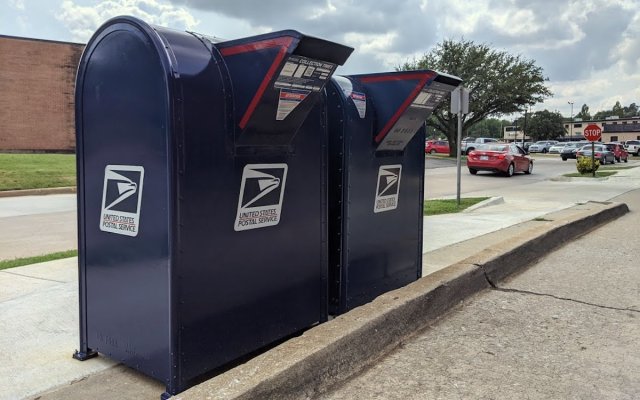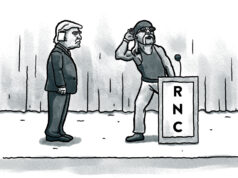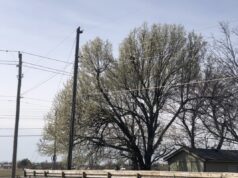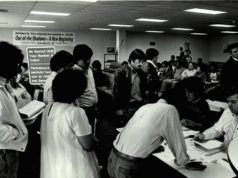

I’m a glass-half-full kind of guy, so I have looked at every angle trying to convince myself that absentee voting won’t turn into a train wreck in November. But it can be hard to stay optimistic given the current situation. And if things do go badly, there is a very real chance the votes of thousands of Oklahomans could go uncounted.
Being the glass-half-full type, I’ll start with the good news: Oklahoma’s ballot security protocols are strong. I’ve worked the past two elections as a precinct inspector and have seen the system up close.
Precinct registers are flagged so that people who requested an absentee ballot must sign a sworn affidavit that they won’t use it if they choose to vote in person. Ballot envelopes are bar-coded. Elections officials use a variety of other tracking and production measures to make sure it’s “one person, one vote.” There is no chance bad actors could flood election boards with phony ballots. Claims to the contrary are, simply and bluntly stated, false.
In the last presidential election, out of 1.4 million votes cast in Oklahoma, the state’s district attorneys investigated only 18 cases of possible fraud. Almost all of them involved older people who forgot they’d voted absentee and then showed up at their polling places on Election Day, too. No charges were filed.
Alas, this is where the water level in our glass begins to recede.
COVID-19 and looming problems within the United States Postal Service pose a serious double threat. Never mind the “now-you-see-it-now-you-don’t” game the Oklahoma Legislature played this past spring after the state Supreme Court voided a requirement for absentee ballots to be notarized. Within days, the Legislature rammed through a modified notary provision and the governor signed it into law. Just like that, we were back to imposing a hurdle that does the most damage to voters who can least afford another obstacle in their lives — particularly the working class and the elderly.
Absentee voters in the June 30 primary were met with a dizzying combination: new rules with confusing and sometimes-conflicting instructions. Voters who wanted to use the option of attaching an approved form of identification were not told where to attach it. To the affidavit envelope? Inside the ballot envelope? People who requested ballots as incapacitated voters were incorrectly instructed that they had to obtain the signatures of two witnesses. As part of a project for the League of Women Voters of Oklahoma, I worked to help voters get their paperwork right and found myself wondering how many people gave up and did not vote at all.
After the primary, the League of Women Voters conducted a review of the state’s absentee ballot procedures. The group then wrote a letter to election authorities outlining obstacles and remedies it had found. The letter ran to four pages. That’s a lot to fix. Most of the problems cannot be corrected by executive action but must be addressed by the Legislature. So we’re stuck with many of the flaws and pitfalls — traps that can lead to mass disenfranchisement — through the Nov. 3 election.
No easy fix for a muddy situation
The current system is a set-up for failure. Confusing requirements and instructions are challenging enough. We also learned last month that the U.S. Postal Service has warned election officials in almost every state, including Oklahoma, that it could not guarantee all ballots cast by mail in accordance with state deadlines will be delivered in time to be counted in November. This warning was issued before President Donald Trump’s declaration that he opposed funding for the USPS because it would enable mail-in voting, but it came after controversial Postmaster General Louis DeJoy announced cost-cutting measures that might delay deliveries. (Those measures thankfully have now been put on pause until after the election.)
With just eight weeks to Election Day, there is no easy fix to this muddy situation. But the Oklahoma State Election Board deserves props for taking steps such as warning voters it would be a bad idea to follow the president’s suggestion that people intentionally vote both absentee and in-person, because that would leave them open to felony charges.
The Election Board is also changing the color of absentee ballot return envelopes in hopes that will flag them for expedited handling.
Those measures only go so far. Oklahoma’s absentee ballot request schedule is, under the circumstances, dangerously unrealistic. By law, voters may request a ballot up to five days before an election. A five-day turnaround used to seem close but not impossible. Now it seems insane, especially since the Election Board expects absentee ballot requests to exceed the record of 141,000 set in the June primary.
While the Postal Service recommends absentee voters mail their ballots at least 15 days before the election — that is, by Oct. 19 — Oklahoma’s election bureaucracy may not be equipped to communicate that. This was a problem in June. Of some 3,600 absentee ballots left uncounted in the June 30 election, more than 70 percent were rejected because they were not delivered on time.
Postage is another stumbling block. Absentee ballots almost always require extra postage, but the return envelopes carry only a vague caution: “First class postage required.” USPS regulations forbid delay of election mail for lack of postage, but the clerk at my local post office said she could not guarantee my ballot would get through with just one first-class stamp. That’s the kind of breakdown that disenfranchises people.
Make sure your vote is counted
All of this will force voters in the Nov. 3 election to make difficult choices. Straight up, your best option to make sure your vote gets counted is to cast it in person on Election Day or during early voting. But that is often not an option for voters with mobility issues — or for those whose age or medical status leaves them at greater risk because of COVID-19.
I’ll be voting absentee because I’ll be working at a polling place on Election Day. To be safe, I’ll mark my ballot and return it the very day I receive it. I’ll use two stamps.
The state election board has an outstanding tool, the OK Voter Portal, which you may use to track your absentee ballot. A friend of mine opted for early in-person voting in June when, using the voter portal, he discovered his absentee ballot was lost in the mail before he received it. A key point worth revisiting: There is some paperwork involved, but you are allowed to vote in person even if you requested an absentee ballot — again, as long as you haven’t used it.
If you are worried that you have waited too long to mail your ballot, you may hand-deliver it to your county election board until close of business on Monday, Nov. 2. Be aware that no one else may return your ballot for you. Also, you may not leave a completed absentee ballot at a polling place on Election Day.
Several organizations, including the League of Women Voters, are producing detailed, step-by-step instructions and videos that will be available by the time the absentee voting window opens. There will be organized efforts to help absentee voters get their ballots notarized or validate them with copies of approved identification.
While it is harder than it should be to cast an absentee ballot in Oklahoma, there are — leaving the glass half full here — ways to protect your vote. Your best defense against being disenfranchised? Don’t put it off. Return your ballot early. This is huge: Make sure you sign your affidavit envelope, even if you are sending a copy of your ID instead of going to a notary. And use two stamps.




















